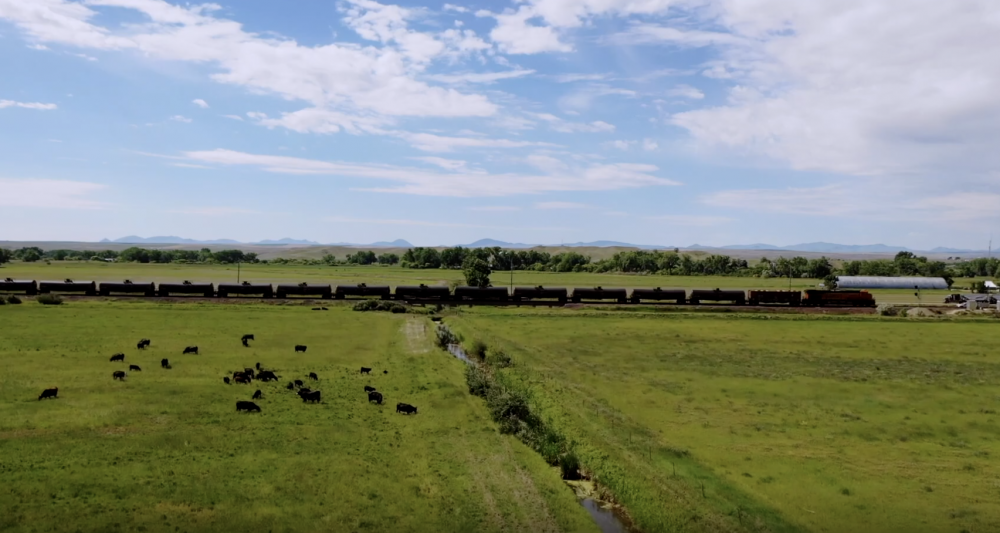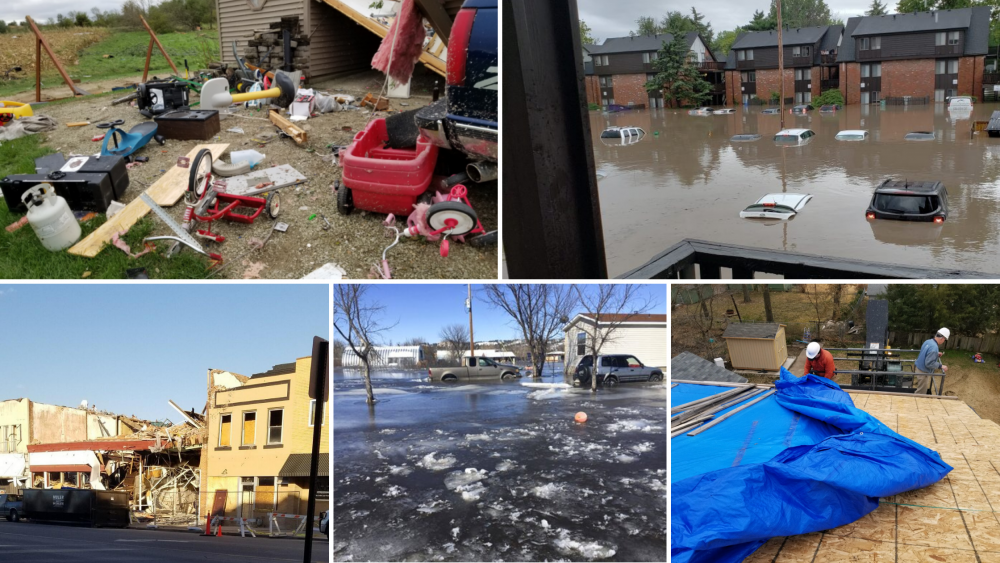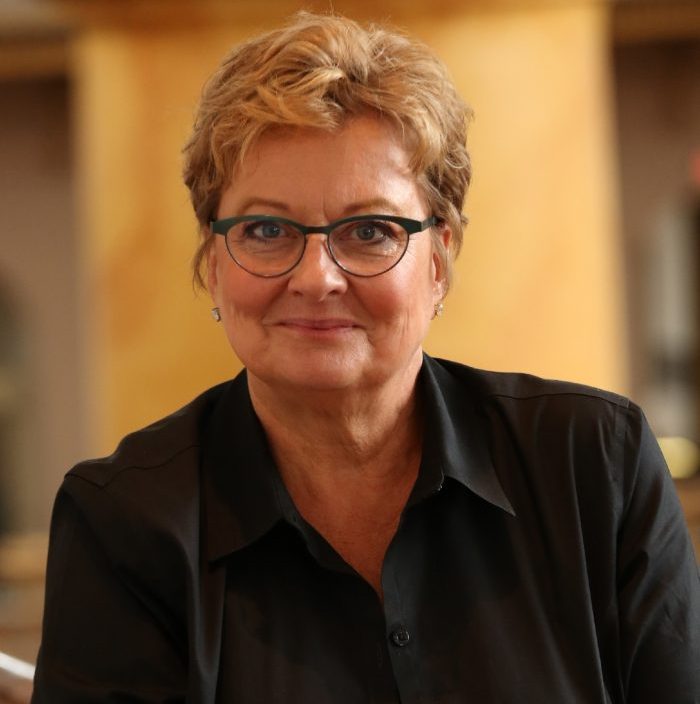Lessons Learned: Midwest Early Recovery Fund
Though this Fund specifically addresses work in a 10-state region in the Midwest, the lessons are relevant for consideration of COVID-19 funding and how dollars on the ground now can assist with long-term recovery. Six years and $4.4 million later. In early 2014, the Center for Disaster Philanthropy (CDP) applied for and received a grant […]

Though this Fund specifically addresses work in a 10-state region in the Midwest, the lessons are relevant for consideration of COVID-19 funding and how dollars on the ground now can assist with long-term recovery.
Six years and $4.4 million later.
In early 2014, the Center for Disaster Philanthropy (CDP) applied for and received a grant from the Margaret A. Cargill Foundation’s Disaster Relief and Recovery fund to develop a program to put monies on the ground quickly after low attention disasters in a 10-state region in the Midwest. There was no real precedent for this program, only a recognition of the need for this type of support.
I was hired as program director in October of that year and titled the work the Midwest Early Recovery Fund (the Fund). Its first grant was in March of 2015 to Pilger Nebraska, a very small rural community (population 352), 85 miles northwest of Omaha, after twin tornadoes destroyed over half of the homes and nearly all the businesses.
Since its inception, the Fund has awarded 81 grants totaling $4.4 million after 52 unique disasters: 14 tornadoes, 23 floods, nine severe storms, two earthquakes and four wildfires. Our average grant of $55,000 helped support 66 different nonprofit partners, all working in communities impacted by low attention disasters. Our unique program invests in building local capacity to give communities the people and the skills needed to develop a long-term recovery process that addresses the needs of the whole community.
I would like to share with you six important lessons I have learned over the past six years.
1. It really does take a village. Our Midwest communities often feel isolated after a disaster. These independent and resilient rural communities are used to fending for themselves. Shocked at how challenging and complex disaster recovery work is, they quickly discover they cannot do it by themselves, which causes a great deal of stress. Our approach to building local capacity is understanding that the most-needed assets are already in these communities. Our work elevates and supports that reality and it has been well received. And it has worked. Success breeds success, bringing renewed hope and a new vision for their future. This is how communities become resilient.
2. We cannot depend on our regional, state and national volunteer organizations to have the capacity to meet the needs of all communities affected by disasters. We seem to have this false sense of security about who shows up after a disaster, that somehow every state has the ability, capacity or will to show up in every community after a disaster to help with recovery. It simply is not true. No state in our region has the assets to do this work consistently, professionally and effectively. We are consistently seeing a huge gap in need versus capacity. The truth is, all our systems are overwhelmed. There are not only more disasters but more people in harm’s way. Our hope lies in building local capacity, training and engaging local leadership and providing as many resources we can at the local level to support “neighbors helping neighbors.”
3. Recovery is dynamic. Although data do not tell the whole story, the collection is vital. We need on-time data, not data collected once with a “one and done” policy, but data that explains the entire timeline of disaster recovery so communities can celebrate their success while understanding what still lies ahead. Recovery is dynamic, ever changing and complex, eventually involving all aspects of a community. It moves from saving lives, to helping people move home, to ensuring a strong economy, to mitigation and climate adaptation work. These activities are not done in steps or silos but are consistently evolving during the recovery cycle. We need data to inform those conversations and future planning.
4. We have seen success! We tend to dwell on the negative, on the lack instead of the amazing stories of success. The prevailing belief is that communities do not need everything at the same time; their needs evolve over the course of recovery. Agencies, partners and donors are almost always willing to listen, to engage and meet need, but are seldom asked in a way that engages them in the process. In this new age of increasing need, our disaster recovery community has to have more of a focus on asset and resource development if we are going to even begin to meet need.
5. We need to prepare for recovery. When we talk about preparation work, we most often talk about how to prevent something from happening. What I now believe is we also need to be preparing for disaster recovery. Why? Because no matter how much we prepare, disasters are still going to happen. And the reality is that within the first months following a disaster, important decisions are made, not based on what should/could be done, but on what needs to be done now. FEMA puts money in the hands of homeowners long before the community has developed a plan on where their investment dollars need to go.
People often leave a community due to a lack of temporary housing but there is not one community I have even been in that, if a plan to rehouse people following a disaster had been in place, families could have stayed. We all know there is an overwhelming need for rapid rehousing but only a handful of small nonprofits have tackled this issue. We all understand people should not be rebuilding in harm’s way, but after waiting two years for a community to decide whether they can rebuild or not, people are bitter, discouraged and most have moved on at a great economic loss to their families and to their communities. We need more funds invested in planning for recovery. Small, rural communities could and should be on the cutting edge of this work.
6. The inequality of the distribution of resources. Recently, we visited a Native Community where multi-generational families are living in condemned housing after a disaster because they have nowhere else to go. I am not sure how long that would be tolerated in a non-tribal rural community in most states, but I am going to guess not for very long. How can this happen in our region? I know it is complicated. I know the issues of tribal governments, deed challenges, home/land ownership variables and a general lack of resources. But no one has shown up with a plan to rehouse these families and individuals while this all plays out. Meanwhile, dozens of older adults and more than 100 children, live, sleep and eat in homes where no one should be living at all. Rural communities and Native communities are constantly under duress. Attention and resources to mitigate those issues are crucial.
The Midwest Early Recovery Fund recently received another three-year, $3.1 million grant. That means CDP will be supporting low attention disasters in the Midwest for NINE years with Margaret A. Cargill Philanthropies’ support! We will take these lessons and continue to learn and evolve. We are so fortunate to have been chosen to do this important, humbling, challenging and critical work.
We are grateful for all of our brave partners, communities and leaders who have stood up and worked to fill the gap for survivors who had no voice. From all of us here at CDP, thank you! Well done!
More like this

Lessons in data-driven disaster recovery

